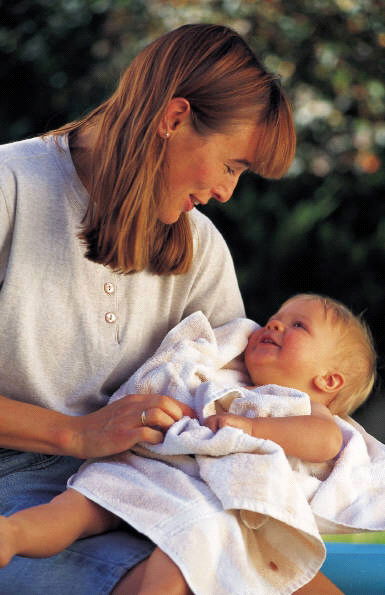What Makes a Great Love Song? For Sweetheart, Child, or Friend

If someone mentions a love song, what comes to mind? A melody that touches the heart, makes you dreamy about someone special or long for someone that you haven’t met yet. You may imagine something more “energetic”, reflecting a more spirited approach to love.
First, I’d like to help you think a little out of the box. People say that they love their mothers, ice cream, puppies and sleeping late, in addition to loving a sweetheart. So, why do we restrict our love songs just to the sweethearts?
A love song for a child often is in the form of a lullaby. Maybe we could invent some new forms of song for friends, parents and others. Just a little something to think about.

Now, for the nuts and bolts of a love song. The first thing that I should tell you is – It’s not easy. Yes, there are forty-two bazillion songs talking about love, but they’re not great, or even good, love songs. Here’s some more information about what makes a good song – Is It Art or Just Music?
I used to teach a song-writing class. One of the assignments was to write a love song without using the word love or any of its forms (lover, lovely, etc.) Just off the top of my head, a good example is “Anyone At All” by Carole King (from the movie “You’ve Got Mail”). Another one is “We’ve Only Just Begun” by The Carpenters.
1. The first thing that would make a love song stand out is that it doesn’t use the same words as everyone else’s. If you listened to the two examples, you get the very definite impression that there is love in the air, but the word is never spoken. Some people might call this a reluctance to commit, but, hey, if the message is communicated, it still makes a great song. (It’s still a very good idea to use the “Love” word when proposing!)
Now, I’m not speaking for all girls and women, but I’ve heard that, deep down, they like something poetic. The words in a great love song should have some class, some panache. There are more than 170,000 words in the English language in current use. Among those are some that can say things in more than just the usual way.
For a few examples, the first is the usual way; the second has more poetry about it.
* I love you. – You are the one I love.
* Let’s always be together. – Till the stars fall from the sky and the oceans run dry, I’ll be by your side.
* You make me feel good. – I like me best when I’m with you.

2. The second thing to consider is, what single thing do you want to say? Don’t try to include a whole verse for each of the qualities of looks, personality, humor, skills and intelligence all in your song. He or she may possess a huge amount of positive qualities, but you want a three or four minute song, not an entire opera. For example, if there was a special lady whose flute playing was a unique quality about her, a song to her might start with maybe two lines about how beautiful and smart she was. Then, it would proceed to the description of the flute playing and the affinity her guy feels.
However, a song can have a list of good qualities if the list is used as a whole, and not expanded on.
When I wrote the song for the wedding of my niece and her husband, I used a “story” approach. There were three verses; the first recounted their past, the second was the present, the third was their hopes for the future. This could apply not only to romantic love songs, but how about a lullaby with parents’ hopes for the future of their child, maybe contrasted with the struggles of their past.
3. Then, there’s the music itself. The music should capture the essence of the words. There are a few very general “rules” for writing music for a song.
“Happy” songs are usually in a major key. They can have a minor chord or two for color, but those chords shouldn’t be where a positive concept is presented. They can have what’s called a modal insertion, a chord that’s not in the song’s key but that can add color and also point back to the home key. For example, in the key of D, the chords could go | D | G | A | D | C | G | D | D | C | G | A | A |.
If a happy song is in a major key, you might think that a sad song would be in a minor key. Not necessarily so. You could use a blues progression. You could also use a major key, but slow it down some. A good example is Christina Perri’s “A Thousand Years”. Here’s the arrangement available on the SCC website. “A Thousand Years”
Speaking of “A Thousand Years”, there’s one part in there is a part in the second verse where she and/or David Hodges wrote a lyric that doesn’t follow one of the cardinal rules of matching words and lyrics. As my father used to say, “Be sure to put the em-PHA-sis on the right syl-LAB-le (emphasis on the right syllable). They wrote, “I will not let a-nyʹ-thing take away, what’s standing in front…” where the emphasis is on the “ny” in anything. I always write songs so that the meaning is clear, as if I had ONE chance to sing it for an audience. If someone has access to a way to repeat a song to get the word(s), the song can be sloppy. But why take a chance?
4. The melody should also “flow” with the words. This is more than just a matter of emphasis, but of rising and falling, cohesive or disjunct or repetitive, and taking the listener to the heart of the song. Sometimes if the notes go “up-down-up” instead of “down-up-down” in just one place, the whole feel of the song can change. This is where the songwriting becomes the most artful and the least objective.
Salt Cellar Creations understands the beauty and power that a love song can convey and has a growing library of original works and arrangements. Explore the offerings HERE.
SCC can also compose an original song for you and your romantic interest, husband or wife, friend, parent or child. (Restrictions may apply). Contact Us for more information.
We have sold music not only in the US but in Canada, the United Kingdom, France, Australia, and New Zealand. Please visit the WEBSITE or CONTACT US to let us know what we can do for you!